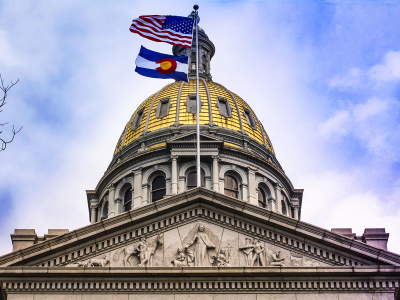
WWW.THECOLLECTOR.COM
The Spanish Armada: Could the Enterprise of England Have Succeeded?
Over the course of a little more than 20 years, Philip went from pursuing Elizabeths hand in marriage to plotting her downfall. The ultimate manifestation of this plan was the Spanish Armada, whose mission was to link up with Spanish troops in the Netherlands and ferry them across the English Channel, where they would defeat the local defenders and remove the queen. A confluence of forcessome natural, some human-causedprevented the armadas success. If some or all of these circumstances had been different, could things have turned out differently?What Led to the Enterprise of England in the First Place?Defeat of the Spanish Armada, 8 August 1588, by Philip James de Loutherbourg, 1796. Source: Greenwich MuseumsPhilip II had been married to Queen Mary of England (sometimes known as Bloody Mary) for most of her reign. However, only a child of theirs, not Philip himself, could succeed to the throne. Thus, when Mary died childless in 1558, Philips hopes of adding England to his familys patrimony died with her, despite a brief and unsuccessful attempt to wed her sister, Elizabeth, after her succession to the throne.By the time of Marys death in 1558, Philip was one of the most, if not the most, powerful men in Europe. All of the vast territories he ruled he had inherited from his father, Holy Roman Emperor Charles V (the empire being a state that Voltaire once famously described as neither holy, nor Roman, nor an Empire). His far-flung holdings included the Spanish possessions in the New World, Naples, Sicily, Milan, the Netherlands (which included the modern Netherlands and Belgium), as well as lands as distant as the Philippine Islands (which were named after Philip himself). But Europe knew him first and foremost as the king of Spain.Philip II, Titian, 1549-1550. Source: Wikimedia Commons; with Portrait of Elizabeth I, Queen of England, ca. 1550-1599. Source: Rijksmuseum AmsterdamThe 1560s, 70s, and 80s were years of increasing inter-religious strife in Europe, especially in France and the Spanish-ruled Netherlands. This could lead to episodes of horrifying violence, such as the St. Bartholomews Day Massacre in Paris in 1572. Added to this was the rivalry between Spain, France, and England, which waxed and waned depending on who felt threatened by whose territorial ambitions or gains, or who was meddling in whose internal religious or political affairs.Among other things, it was Englands supportsometimes direct, sometimes indirectfor rebellious Protestants in the Netherlands, as well as English harassment of Spanish shipping, which led Philip to conclude that Englands protestant queen, Elizabeth, must be removed by force and replaced with a Catholic monarch (perhaps even himself) who would bring England back into the Catholic fold. This plan became known as the Enterprise of England.1. Mary Queen of Scots: The Babington PlotMary, Queen of Scots, by Francois Colet, ca. 1558-60. Source: Wikimedia CommonsAs the Enterprise of England took shape in the mid-1580s, one possibility that Philip entertained was the replacement of Elizabeth on the throne of England with Mary Queen of Scots. Like Philip, Mary was a devout Catholic. Furthermore, she had, in Catholic eyes at least, an even stronger claim to the English throne than Elizabeth. On her fathers side, she was a direct descendant of Henry VII, founder of the Tudor Dynasty.Elizabeth was also a direct descendant of Henry VII, her mother was Anne Boleyn, whom Henry VIII had married after declaring himself head of the Church of England and annulling his marriage to Catherine of Aragon. However, as Catholics believed that only the pope had the power to annul a marriage and did not recognize the authority of the Church of England, they saw Elizabeth as illegitimate and therefore disqualified from the throne.The problem was that Mary had been a prisoner in England since fleeing Scotland in 1568. It was widely believed in Catholic lands that there was still a large (probably exaggerated) number of Catholics in England and Scotland, mostly practicing their faith in secret for fear of persecution. Philip believed that if Mary could be freed, these Catholics would rise up in rebellion against Elizabeth and place Mary on the throne. An opportunity to realize this possibility arose in the form of the Babington Plot, named after Anthony Babington, who was at the center of the intrigue.Through correspondence smuggled into and out of her prison, Mary agreed that if she was freed, Elizabeth was assassinated, and she herself was placed on the throne, then she would name Philip her heir instead of her son, who was a Protestant (and who would ultimately succeed to the English throne as James I in 1603).Mary, Queen of Scots kneeling on the scaffold, by William Nelson Gardiner, 1790. Source: The MET, New YorkIf successful, this would have eliminated the need for the exorbitantly costly Spanish Armada since Philips objective would have been achieved. However, all of the correspondence between Mary and her co-conspirators, including Philips agents, had been monitored and indeed directed by Elizabeths spymaster, Francis Walsingham. By signing off on the plot, Mary had effectively signed her own death warrant. She was executed in 1587. Ironically, Philip was partially responsible for the death of the one person who could have most easily (or least expensively) brought his plans to fruition.2. Enter Sir Francis DrakeSir Francis Drake wearing the Drake Jewel at his waist, by Marcus Gheeraerts the Younger, 1591. Source: Greenwich MuseumsPhilip did not lose the opportunity to exploit Marys execution for his own purposes. As he gave the go-ahead to begin assembling the Spanish Armada, he framed himself as the avenger of the true queen of England, murdered by the heretical Elizabeth. Planning of the colossal undertaking was underway in April of 1587 when Sir Francis Drake, the famous English privateer, led a fleet in an attack on the Spanish port city of Cadiz which would have far-reaching consequences.Elizabeth had given Drake orders to attack Spanish ships, including in their harbors, in an effort to disrupt the assembly of the armada (Philips enterprise was hardly a secret). Drakes fleet sank or captured upward of 30 Spanish and allied ships, striking fear into the Spanish and Portuguese and disrupting the flow of supplies into Lisbon for the outfitting of the fleet.Drakes predations caused serious concerns about the Spanish treasure fleet coming from the Americas and a large part of the already forming armada sailed from Lisbon to the Azores to protect it in June 1587, not to return until September of that year with many ships in need of repair.These events caused serious delays to the outfitting of the armada, actually pushing the launch date into the following year, 1588. This was certainly a painful blow, but perhaps equally as painful if not nearly as headline-worthy was the loss of a great quantity of barrel staves.The Surrender of Pedro de Valds to Francis Drake, by John Seymour Lucas, 1889. Source: Wikimedia CommonsDuring the Cadiz raid, Drake came across several ships carrying barrel staves (among other supplies) and burned them all. Barrel staves were used to make, as the name implies, barrels. Provisions of all typesfood, water, alcohol, etc.were stored in wooden barrels aboard ships for the use of the crew. Barrel staves had to be seasonedwhich took timein order to seal properly during barrel production. Thus, a large quantity of seasoned barrel staves could not be swiftly replaced.The result was that many of the barrels produced for the provisioning of the Spanish Armada were made from improperly seasoned staves, which caused the barrels to become leaky before long, leading to spoiled water and food. This led to provision shortages and illness on the armadas ships, especially as once out of Spanish waters there was nowhere for them to resupply with fresh, unspoiled provisions.3. Sometimes the Weather Just Will Not CooperateMap showing the route of the Spanish Armada, from the History Department of the United States Military Academy at West Point, 2020. Source: Wikimedia CommonsWhen the Spanish Armada got underway in early May 1588, the weather did not provide a good omen. The fleet was sailing out of Lisbon, down the Tagus River toward the Atlantic, when a fierce wind arose out of the west, preventing it from entering the open seas. The wind did not relent for three weeks. When the wind finally did let up, allowing the fleet into the Atlantic to sail up the Iberian coast, a strong wind out of the north arose, forcing the ships to sail directly into the wind at a snails pace. Thus, when the armada should have already been in the English Channel, it had only made it as far as the northwestern corner of Spain.Shortly after this, the armada ran into a fierce storm at La Coruna which scattered ships in all directions. Some vessels were heavily damaged, while others went unaccounted for. It took several days to gather up the surviving ships. This loss of ships and men, in addition to swiftly diminishing provisions (partly caused by all the delays, partly by the lack of good barrel staves), caused the captain-general of the armada, the Duke of Medina Sidonia, to write to Philip II suggesting that the entire enterprise be abandoned. This was, of course, denied.Launch of Fireships against the Spanish Armada, 7 August 1588, Netherlandish School, ca. 1590. Source: Greenwich MuseumsWhen the Spanish Armada finally entered the English Channel at the end of July, the wind was in its favor, blowing out of the west. The Spanish skirmished with the English defenders several times while making their way east toward their intended rendezvous with the Duke of Parma and his army in the Netherlands. However, sitting at anchor at Calais (northern France) on the night of August 7th, the Spanish were attacked by English fireships (ships intentionally set on fire and sailed toward an enemy formation) which had a strong wind at their backs. This spread terror among the Spanish crews, leading the majority of the ships to flee in disarray.The following day the English, with the wind at their backs (known as having the weather gauge in naval terminology), drove the disordered Spanish ships along the Flemish coast, hoping to force them onto the shoals where they would wreck. The wind for once shifted in the Spaniards favor, allowing them to sail into the North Sea and escape, though hotly pursued by the English and essentially abandoning their mission altogether.4. An Invasion Without an Invasion ForcePortrait of the condottiere Alessandro Farnese, Duke of Parma, Governor of the Netherlands, by Otto van Veen, ca. 1585. Source: RKD ImagesIt is indeed ironic that perhaps the most crucial part of Philips grand plan seems to have received the poorest planning. After entertaining several different ideas of how the invasion of England should proceed, Philip ultimately decided that the Spanish Armada would meet up with an army of roughly 30,000 men under the Duke of Parma in the Netherlands and convey them across the English Channel.The problem was that the specific logistical issues surrounding the meeting up and conveying part had never been specifically addressed. Parma had indeed pointed this out to Philip on several occasions, but his objections were consistently rebuffed. Thus, when the armada set sail, the orders from Philip were for Parmas army to be ready to cross in barges on the Flemish coast and for the Spanish fleet to meet up with them and protect their crossing of the channel against the English.Parmas main objection to the plan was that the coastal waters he would have to initially cross were too shallow for the Spanish vessels to approach sufficiently near (they had too deep a draft). However, a group of rebel Dutch sailors, known as the Sea Beggars, had shallow draft vessels with which they regularly harried the Spanish along the coast, and with which they could easily attack the unarmed barges which would serve as troop transports.Not wishing to see his army decimated as soon as it hit the water, Parma insisted that the Spanish Armada must eliminate the threat of the Sea Beggars first, which was essentially impossible since the larger Spanish vessels could not chase the smaller Dutch vessels into shallow coastal waters.The Relief of Leiden by the Sea Beggars, 1574, by Johan Bernard Wittkamp, 1860. Source: Wikimedia CommonsAnother problem was communication, which was never particularly reliable in the 16th century in the first place. There needed to be clear coordination between the two commanders as to when and where this conjunction would take place, even if they could have surmounted the logistical issues. Despite repeated letters to Parma, no reply was received until the armada was at anchor at Calais. The tidings the letter brought were not good: nothing had been done to prepare the army to cross. Within two days, the Spanish Armada was dispersed by fireships and was retreating to the North Sea, away from the army which was not ready to cross anyway.And the Final Verdict IsEnglish Ships and the Spanish Armada, August 1588, 16th century. Source: Art UKSo, could the Enterprise of England have actually succeeded? Let us address each of the four circumstances covered here which conspired against its success.1. The Babington Plot. If the Babington Plot had succeeded as planned, resulting in the death of Elizabeth and the crowning of Mary Queen of Scots, then Philips goal of Elizabeths removal would have been achieved. But would Mary have in turn honored her end of the bargain and kept Philip as her successor, and if so, would the English have accepted him as king? Given that the English never really accepted Philip when he was married to Elizabeths sister, Mary Tudor, this seems unlikely.2. Sir Francis Drake. Had Drake not attacked Cadiz (or been unsuccessful) then many delays would have been avoided and there would not have been a barrel stave issue. Perhaps the armada could have even sailed in 1587 instead of 1588 as originally planned. But would this have been enough to ensure success? Probably not on its own, but it certainly would have helped.The Spanish Armada off the English Coast, by Cornelis Claesz van Wieringen, ca. 1620-1625. Source: Rijksmuseum Amsterdam3. The weather. The weeks of delays at the very outset of the Spanish Armada and the storm at La Coruna had severe consequences, both in ships and sailors lost and in the much heavier consumption of provisions (those that were actually unspoiled). Plus, without the wind in their favor, the English fireships at Calais would not have had their devastating effect, which caused the armada to lose cohesion and eventually be driven off. Had the weather been favorable to the Spanish throughout then the armada would have entered the English Channel with more ships, more men, and more provisions and would likely not have been scattered by fireships. But favorable weather alone would not have delivered a victory.4. The failure to link up with Parma. This seems to be the major factor guaranteeing the failure of the Spanish Armada. If this had been well-plannedincluding a way to deal with the Sea Beggars and with constant communication between the two commandersthen the armada could have protected the barges as they crossed the channel with Parmas army. Of course, whether the Spanish vessels would have been able to protect the barges from the English is open to debate.Thus, the short answer to the question Could the Enterprise of England have succeeded? is yes. However, every circumstance mentioned would have had to have gone in favor of the Spanish, so the probability of success would still have been extremely low. So, is it possible? Yes. Likely? Definitely not.
0 Комментарии
0 Поделились
154 Просмотры











